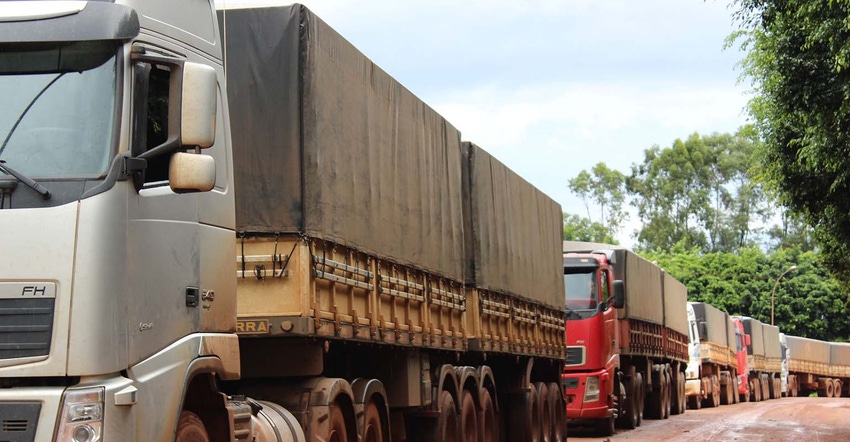
You surely enjoy a transportation cost advantage over Brazil when it comes to soybeans. That’s why I try to keep you up to speed on developments like a new proposal for a bimodal transport system to get expensive-to-reach northern Mato Grosso beans to port more cheaply.
The plan relies on a rail-water route to export commodities on the Amazon and would be expected to end up costing upwards of $4 billion to build.
The 685-mile rail portion would run parallel with the famously muddy BR-163 highway (you’ve seen pictures of tractors pulling buses and trucks axle-deep—or deeper on that route.)
Globo Rural magazine says the project, officially known by the rather sundry name of EF-170, seems to have gotten some of the big crushers to sit up and listen. And despite the fact it would mean building a railroad—albeit one that runs alongside a highway that’s already there—the Transportation Minister Mauricio Quitella Lessa seems to be on board as well. After all, a study drawn up for the project reportedly indicates that, if the train were to operate soon, some 87% of Mato Grosso state soybean production would be transported on rails, either south on the train to Sao Paulo or north on the bimodal train system to Amazon ports. And the environmental impact would be smaller than that of hauling those beans on the highway.
Is it feasible?
Now, who knows whether such a project would take off? The North-South Railway has built hundreds of miles of track, but is only actually operating cars on a small portion. And whatever happened to that talk of the Chinese building a continent-wide “East-West’ railroad, connecting Brazilian bean fields to the Pacific by railing through Bolivia and Peru?
Brazil’s soy production continues to not only grow, but to expand to the North. They’re going to need money, determination and a stubborn streak for the EF-170 to get beyond the study stage.
The opinions of the author are not necessarily those of Farm Futures or Penton Agriculture.
About the Author(s)
You May Also Like






